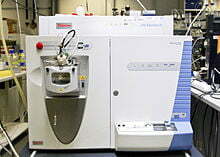What is c60 / c 60 ?
Carbon 60, often abbreviated as C60, is a molecule consisting of 60 carbon atoms arranged in a unique structure resembling a soccer ball. This structure is a type of fullerene, a class of carbon molecules that includes various shapes such as spheres, ellipsoids, and tubes.
C60 was first discovered in 1985 by a team of scientists led by Sir Harry Kroto, Robert Curl, and Richard Smalley, which earned them the Nobel Prize in Chemistry in 1996. The molecule’s discovery marked a significant advancement in the understanding of carbon chemistry and introduced new possibilities for materials science and nanotechnology.
Key features of C60 include:
- Structural Stability: C60 molecules have a high degree of structural stability, making them robust and resistant to various environmental conditions.
- Hollow Spherical Shape: The carbon atoms in C60 form a hollow, spherical shape, resembling a soccer ball or a geodesic dome.
- Electrical Conductivity: C60 exhibits electrical conductivity, contributing to its potential applications in electronics and materials science.
- Versatility: Fullerenes, including C60, have been studied for their versatility in various fields, including medicine, materials science, and nanotechnology.
In recent years, C60 has gained attention for its potential antioxidant properties, which has led to its incorporation into health supplements. However, it’s important to note that while some research suggests potential benefits, more studies are needed to fully understand the effects of C60 on human health. As with any supplement, individuals should exercise caution and consult with healthcare professionals before incorporating C60 into their wellness routine.
More about Carbon 60 (C60, C 60)
Carbon 60, also known as C60 or Buckminsterfullerene, is a unique molecule composed of 60 carbon atoms arranged in a spherical shape resembling a soccer ball. C60 was discovered in 1985 and named after the architect Buckminster Fuller, who designed geodesic domes with a similar shape.
Fullerenes like C60 are important because they exhibit a wide range of unique properties, including high stability, high conductivity, and high reactivity. They have potential applications in a variety of fields, including medicine, electronics, and energy.
In research, C60 has been studied for its potential as an antioxidant, with some studies suggesting it may have a protective effect against oxidative stress and inflammation. It has also been investigated for its potential as a drug delivery system and as a material for use in electronic devices.
Overall, the discovery of C60 has opened up new avenues for research and technology, and continues to be an area of active investigation and innovation.
C60 has several interesting properties, including high chemical stability, low toxicity, and the ability to act as a powerful antioxidant. These properties make it a promising candidate for a wide range of applications, such as in materials science, drug delivery, and energy storage.
Additionally, C60 has been the subject of scientific studies exploring its potential health benefits, such as anti-inflammatory and anti-cancer effects. However, more research is needed in this area to fully understand its benefits and potential risks.
Carbon 60, often referred to as C60, is a microscopic molecule with 60 carbon atoms, which looks similar to a buckyball. C60 works as an antioxidant in the body, removing harmful antioxidants. Because they’re so small, C60 molecules can reach individual components of your body’s cells. That’s one reason why this compound is being researched for the fields of nanotechnology and nanomedicine.
Where to buy Carbon 60 capsules
Overview Of Carbon 60
Carbon 60 (C60), also known as fullerene, is a unique carbon molecule that gained significant attention for its distinctive structure and potential applications. Here’s an overview of Carbon 60:
1. Molecular Structure:
- C60 is a molecule composed entirely of carbon atoms arranged in the shape of a hollow sphere or ellipsoid.
- It belongs to the fullerene family, which includes other carbon structures like C70 and carbon nanotubes.
2. Discovery:
- C60 was first discovered in 1985 by Sir Harry Kroto, Robert Curl, and Richard Smalley. They were awarded the Nobel Prize in Chemistry in 1996 for this discovery.
- The molecule was found during experiments exploring the formation of interstellar dust.
3. Properties:
- C60 exhibits unique properties, such as high chemical stability and excellent electrical conductivity.
- Its hollow structure resembles a soccer ball, consisting of 60 carbon atoms arranged in a pattern of hexagons and pentagons.
4. Synthesis:
- C60 can be produced through various methods, including laser ablation, arc discharge, and chemical vapor deposition.
- Fullerene production has expanded beyond C60 to include other fullerene variants.
5. Antioxidant Properties:
- C60 has been studied for its potential antioxidant properties, meaning it may help neutralize free radicals in the body.
- Research suggests that C60 molecules can efficiently trap and neutralize reactive oxygen species.
6. Medical Applications:
- While research is ongoing, C60 has shown promise in various medical applications, including drug delivery systems and potential therapeutic uses.
7. Research and Studies:
- Numerous scientific studies have explored the properties and potential applications of C60, contributing to a growing body of knowledge about its behavior and capabilities.
8. Commercial Products:
- C60 is available in commercial products, often marketed as health supplements. These products claim various health benefits based on its antioxidant properties.
9. Safety Considerations:
- The safety of C60, especially in the long term, is a subject of ongoing research. It is important to consider potential risks and adhere to recommended dosage guidelines.
10. Future Outlook: – The field of fullerene research, including C60, continues to evolve, with ongoing investigations into its potential applications in medicine, materials science, and beyond.
In summary, Carbon 60 is a remarkable molecule with a unique structure, and its properties make it a subject of interest in scientific research and various industries. As studies progress, a clearer understanding of its potential benefits and applications is expected to emerge.
Brief history and discovery

Photo courtesy of Wikipedia
In basic terms, carbon 60 is a collection of 60 carbon atoms. Carbon 60 (also known as C60) was first mentioned in 1965 in an article written by scientist Harry P. Shultz titled Topological Organic Chemistry. Polyhedranes and Prismanes. C60 wasn’t mentioned again until 1970 when Toyohashi University of Technology professor Eiji Osawa forecasted C60’s existence. At the time he was describing the polycyclic aromatic hydrocarbon molecule, a structure that looked like five hexagons surrounding one pentagon. In this description, he hypothesized that there could be a spherical version of this structure. While Japanese scientific journals reported Osawa’s idea, the translations of the reporting never reached Europe or America.
In the same year, another scientist by the name of R. W. Henson hypothesized the existence of C60 and even made a model of it. However, the scientific community felt the evidence he presented wasn’t strong enough and his findings weren’t accepted. In fact, the only recognition Henson got from his work on C60 was an acknowledgment of his paper in a 1999 issue of the scientific journal Carbon. Henson wasn’t the only C60 researcher to have their findings rejected by the scientific community. In 1973 a group of scientists in the USSR analyzed the stability of carbon 60 at the quantum-chemical level and calculated its structure. While the researcher’s paper was published in Russia’s Proceedings of the USSR Academy of Sciences, many still didn’t accept the predictions of carbon 60.
Did you know? Taking C60 with olive oil before a workout could leave you less winded in the end.

Photo courtesy of Wikipedia
Molecular Structure
The molecular structure of C60, also known as Buckminsterfullerene or simply fullerene, is a unique and distinctive arrangement of carbon atoms. C60 belongs to the fullerene family, and its structure is often described as a truncated icosahedron. Here are the key features of the molecular structure of C60:
- Carbon Atoms:
- C60 is composed of 60 carbon atoms.
- All carbon atoms are arranged in a three-dimensional structure, forming a closed cage-like shape.
- Hexagons and Pentagons:
- The carbon atoms are arranged in a series of interconnecting hexagons and pentagons.
- The most common representation of C60 depicts 20 hexagons and 12 pentagons.
- Soccer Ball Shape:
- The arrangement of hexagons and pentagons gives C60 a spherical shape resembling a soccer ball or a geodesic dome.
- The overall structure is highly symmetric.
- Sp2 Hybridization:
- Carbon atoms in C60 undergo sp2 hybridization, forming three sigma bonds with neighboring carbon atoms.
- The remaining p-orbital in each carbon atom is responsible for the π bonds, which contribute to the stability of the structure.
- Double Bonds:
- The alternating arrangement of single and double bonds between carbon atoms contributes to the stability of the fullerene structure.
- This alternation of bonds is a characteristic feature of the conjugated system in C60.
- High Symmetry:
- C60 exhibits high symmetry due to its uniform arrangement of carbon atoms.
- The symmetry contributes to its stability and unique properties.
- Hollow Structure:
- One of the defining features of C60 is its hollow structure, with an empty space in the center of the molecule.
The molecular structure of C60 was first identified through experiments that involved vaporizing graphite and studying the resulting carbon clusters. The discovery of this soccer ball-shaped molecule opened up new avenues for research in the field of nanotechnology and has led to numerous applications in materials science, medicine, and other disciplines. The Nobel Prize in Chemistry in 1996 was awarded to the scientists who played a key role in the discovery of C60.
The Physical Properties of C60
- State at Room Temperature:
- At room temperature (around 20–25 degrees Celsius or 68–77 degrees Fahrenheit), C60 exists as a solid.
- It has a relatively high melting point, and its solid state contributes to its stability.
- Color:
- C60 is typically described as black or dark brown in its pure form.
- The coloration is due to its unique molecular structure and the absorption of light in the visible spectrum.
- Solubility:
- C60 is sparingly soluble in common solvents like water.
- It is more soluble in organic solvents such as toluene and benzene.
- Density:
- The density of C60 is relatively low, reflecting its hollow structure.
- The density is around 1.65 g/cm³ for the solid form.
- Electrical Conductivity:
- C60 exhibits some degree of electrical conductivity.
- This property is a result of the π-electron system within the carbon double bonds, allowing for the flow of charge.
- Hardness:
- C60 is relatively hard in its solid state.
- The hardness is attributed to the strong covalent bonds between carbon atoms in the fullerene structure.
- Boiling Point:
- C60 has a high boiling point, reflecting its stability at elevated temperatures.
- The boiling point is significantly higher than typical organic compounds.
- Vapor Pressure:
- C60 has a low vapor pressure, meaning it tends to remain in a solid state under normal conditions.
- This characteristic contributes to its stability and longevity.
- Magnetic Properties:
- C60 is not intrinsically magnetic.
- Its lack of magnetic properties is due to the symmetric arrangement of carbon atoms and the absence of unpaired electrons.
- Chemical Stability:
- C60 is highly chemically stable.
- It is resistant to oxidation and can withstand harsh environmental conditions, contributing to its role as a stable molecule with potential applications in various fields.
Understanding the physical properties of C60 is crucial for exploring its potential applications in materials science, medicine, and other disciplines. The unique combination of properties, including its hollow structure and electrical conductivity, makes C60 a subject of ongoing scientific research and technological development.
Chemical Stability and Reactivity
C60 is relatively stable and unreactive under normal conditions, due to its strong covalent bonding and spherical structure. However, it can react with certain reactive species such as atomic oxygen, ozone, and nitrogen dioxide. C60 can also undergo reactions with certain organic compounds under certain conditions, such as in the presence of ultraviolet light or heat.
Overall, C60’s unique molecular structure and physical and chemical properties make it an interesting and important molecule for research and potential applications in a variety of fields.
The c60 Breakthrough
In 1985, with the help of mass spectrometry, Harold Kroto of the University of Sussex, along with James R. Heath, Sean O’Brien, Robert Curl and Richard Smalley from Rice University, were finally able to give proof of Carbon 60. They named the new arrangement of carbon atoms Buckminsterfullerene after Richard Buckminster Fuller. Fuller was a famous architect whose geodesic domes resembled C60. Any cluster of atoms like C60 then became part of a family class called fullerenes. Here is a link to the original ground breaking research published in the scientific journal available. The C60 discoverers were awarded the Nobel Prize in 1996.
See for Yourself the Miracle of Carbon 60
Olive oil with C60 made the rats live longer.
Applications of C60
Materials Science Applications
C60 and its derivatives have potential applications in nanotechnology and semiconductors due to their unique electronic and optical properties. For example, C60 can be used as a molecular electronic device or as a building block for nanoscale materials. C60 has also been studied for its potential as a lubricant and as a reinforcement material in polymers and composites.
Biomedical Applications
C60 has been studied for a range of biomedical applications due to its potential antioxidant properties, ability to cross cell membranes, and biocompatibility. It has been investigated as a drug delivery vehicle, imaging agent, and as a potential therapy for a range of diseases, including cancer, neurodegenerative diseases, and inflammation.
Energy Applications
C60 has potential applications in energy storage and conversion, including in solar cells and batteries. Its unique electronic properties and high surface area make it a potential candidate for improving the efficiency and stability of solar cells, while its ability to store and release electrons makes it a potential electrode material for batteries.
Overall, the unique properties and potential applications of C60 make it an exciting and active area of research in a range of fields.
Potential Benefits of Carbon 60 (c60)
Overview of Scientific Studies on C60’s Health Benefits: While research on the health benefits of C60 is still in its early stages, there have been a number of studies conducted in recent years that suggest potential benefits. These studies have investigated the antioxidant and anti-inflammatory properties of C60, as well as its potential use in cancer therapy and as a supplement for various health conditions.
While the research on the potential benefits of Carbon 60 (C60) is still in its early stages, and more studies are needed for conclusive evidence, there have been some areas of interest beyond anti-inflammatory and anti-cancer properties. Here are a few potential benefits that have been explored:
- Antioxidant Properties:C60 is known for its strong antioxidant properties. It may help neutralize free radicals, which are reactive molecules that can cause oxidative stress and damage to cells. Antioxidants, in general, are associated with promoting overall health and reducing the risk of chronic diseases.
- Neuroprotective Effects: Some studies suggest that C60 may have neuroprotective properties, indicating potential benefits for brain health. This could be relevant in the context of neurodegenerative diseases and age-related cognitive decline.
- Longevity and Lifespan Extension: Initial animal studies have indicated potential effects on lifespan extension. While these findings are intriguing, more research is needed to understand if similar effects occur in humans.
- Cardioprotective Effects: There is some research suggesting that C60 may have cardioprotective effects, potentially contributing to heart health. This could be attributed to its antioxidant and anti-inflammatory properties.
- Wound Healing and Tissue Regeneration: C60 has been studied for its potential in promoting wound healing and tissue regeneration. This may have implications for regenerative medicine and the treatment of injuries.
- Anti-Viral Properties: Preliminary studies have explored the antiviral potential of C60, suggesting inhibitory effects on certain viruses. However, more research is needed in this area.
- Anti-Aging Effects: Some researchers propose that the antioxidant and anti-inflammatory properties of C60 may contribute to anti-aging effects. This is an area of interest, but further studies are required to establish conclusive evidence.
- Anti-Inflammatory and Anti-Cancer Effects of C60: One of the most well-studied potential health benefits of C60 is its anti-inflammatory and anti-cancer effects. Several studies have shown that C60 can reduce inflammation in a range of tissues, including the brain, liver, and heart, and may also have anti-cancer properties. C60 has been found to inhibit the growth of cancer cells in vitro and in animal models, and may also help protect against the harmful effects of radiation and chemotherapy.
It’s important to emphasize that while these potential benefits are based on early research, the scientific community is still investigating the safety, efficacy, and mechanisms of action of C60 in various contexts. Anyone considering C60 supplementation should approach it with caution, be aware of the current state of research, and consult with healthcare professionals for personalized advice.
Potential Use of C60 as a Supplement or Treatment
C60 is being investigated as a potential supplement for a range of health conditions due to its antioxidant and anti-inflammatory properties. Some early research suggests that C60 may be useful for conditions such as arthritis, liver disease, and diabetes, although more research is needed to confirm these effects. C60 is also being studied as a potential treatment for neurodegenerative diseases such as Alzheimer’s and Parkinson’s.
Overall, while research on the health benefits of C60 is still in its early stages, there is growing interest in its potential use as a supplement or treatment for a range of health conditions.
Potential Risks of c60
C60 has been touted for its many potential health benefits, but as with any substance, it’s important to consider its potential risks as well. There have been a number of scientific studies conducted on the toxicity of C60 and its potential environmental impacts, as well as safety considerations for use in humans and animals. While some studies have suggested that C60 may have adverse effects in certain circumstances, more research is needed to fully understand the risks associated with C60. It’s important for anyone considering the use of C60 to be aware of these potential risks and to consult with a healthcare professional before use.
Groundbreaking c60 Study
C60 was on the verge of changing scientific many fields of study, but the biggest change turned out to be in biology. The groundbreaking study was done by Tarek Baati, Fanchon Bourasset, Najla Gharbi, Leila Njim, Manef Abderrabba, Abdelhamid Kerkeni, Henri Szwarc, and Fathi Moussa and published in 2012. In the study, the researcher team bought C60 from SES Research to see its effects on Wistar rats. They separated the rats into several groups. Some groups were given 1 ml of water, some were given 1 ml of olive oil, and the last groups were given 1 ml of olive oil with C60. Upon studying the rats’ urine, blood, and brain samples, they discovered something amazing. The rats that were given olive oil had increased their lifespan by 30%. But the rats that were given the olive oil with C60 increased their lifespan by almost 90%! In short: olive oil with C60 made the rats 90 live longer.
How Can You Find Out More About Carbon 60?
Testimonials from many people can provide a good indication of what benefits new supplements and compounds can have. They’re not the same thing as a peer-reviewed scientific study, but they’re the next best thing. Obviously, every person’s body is unique, so your experience may not be exactly the same as someone else’s. But when something gives you the results you’ve been waiting for, it makes sense to stick with it. Listening to your body is always a great idea. If you have other questions about C60, contact us at SES Research for assistance. Discover how this cutting-edge compound helps you, and buy C60 in olive oil, coconut oil, or avocado oil right away. Purchase c60 Supplements
Carbon 60 (C60):
What is C60? Pharmaceutical companies and industrial operations mainly use C60 for research purposes. C60 is a purified form of C60 that has been processed carefully for safer human consumption.
What Are the Benefits of C60? Because C60 is still relatively new on the scientific scene, researchers aren’t completely sure of all the effects these compounds may have. So far, the benefits appear to revolve around antioxidant activity, potentially reducing cellular damage from pollution, UV rays, and environmental toxins. It’s important to understand that more testing is needed to discover all the ways C60 can help. Most scientific papers about C60 are related to animal studies, so more human trials need to happen before doctors can recommend these compounds for specific conditions. At SES Research, we’re convinced that C60 holds amazing potential for increasing quality of life, cell health, and longevity. That’s why we’re conducting our own research in addition to paying attention to the latest medical studies on C60.
Are You Ready to Feel Better and be Healthier? If you’re looking for a quick boost and a better, healthier life, try taking C60 in olive oil today. Many who have taken C60 in olive oil say it makes their usual workout routines easier to complete and leave them less winded at the end. To learn more about what C60 can do, click here.
To order C60 online
In conclusion, C60 is a remarkable molecule with unique properties that make it a promising candidate for a wide range of applications in materials science, biomedicine, and energy. It has been the subject of extensive scientific research, which has revealed its potential health benefits as well as some concerns regarding its toxicity and environmental impact. Nonetheless, C60 continues to be an exciting field of study, with many avenues for further research and development. As scientists and engineers continue to explore the possibilities of this fascinating molecule, we can look forward to new breakthroughs and innovations that could transform many areas of our lives!
What is C60?| SES Research – Houston, TX



